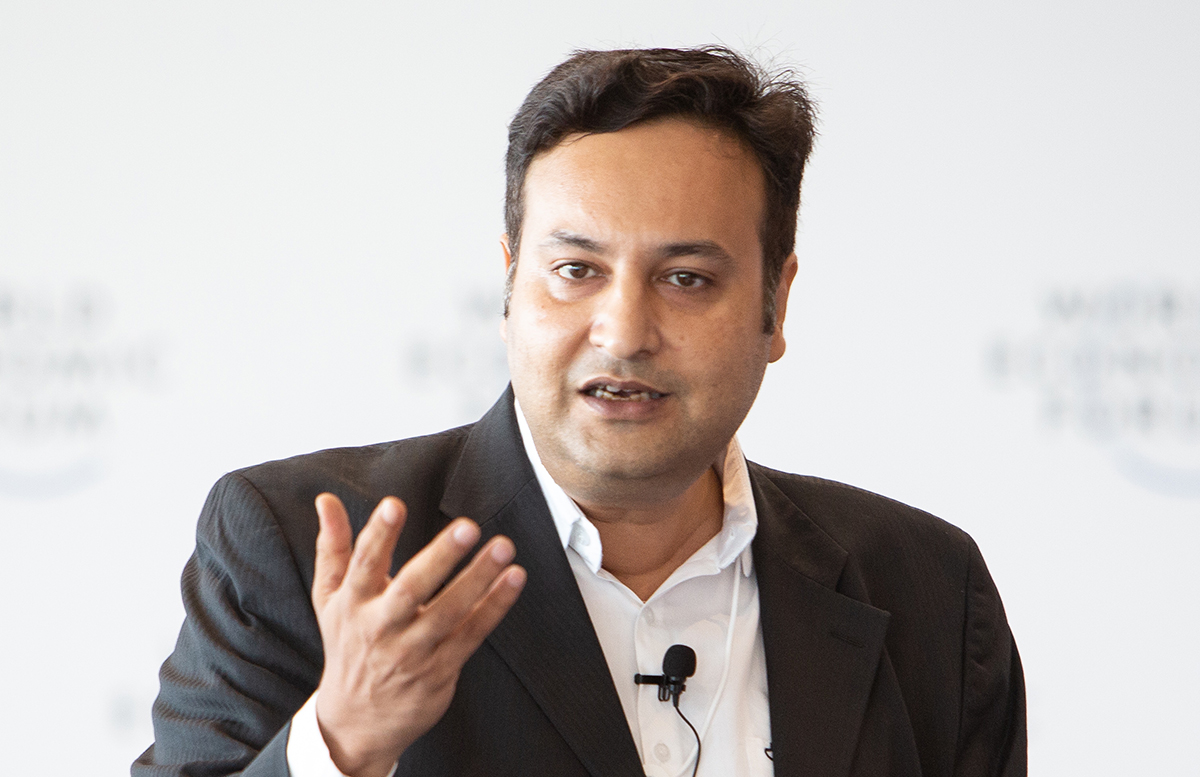January 31, 2024
From AI and blockchain to machine learning… Deepak Pareek is an authority on all things AgTech. Ahead of his speech at Pulses 24, he chats to Michelle Dennis on India’s digital revolution.


Deepak Pareek is speaking at the GPC’s Pulses 24 convention in New Delhi, India on February 14-17, 2024. Not registered yet? Sign up today!
The integration of IoT and AI in pulses production is a game-changer for the agriculture sector. It not only enhances production efficiency and sustainability but also promises a future where technology and traditional farming practices work hand in hand for optimal results. In pulses production, IoT devices like soil sensors and drones provide crucial data on soil health, moisture levels, and pest infestations. This information enables precise irrigation, fertilization, and pest control, significantly increasing yield and reducing resource wastage.
AI algorithms analyze the data collected by IoT devices to predict crop performance and environmental impacts. This predictive analysis supports crop rotation and selection, enhancing soil fertility and reducing the carbon footprint. Furthermore, AI-driven automation in processing and packaging lines streamlines manufacturing, reducing labor costs and human error while ensuring consistency in quality.
A multifaceted approach is essential. The primary challenge is the digital literacy of farmers - educating them about the benefits of technology, such as improved yield and sustainability, is crucial. Also, the affordability and accessibility of digital tools pose significant hurdles. Partnerships between the government, tech companies, and other ecosystem players can facilitate incentives for technology adoption, and investment in digital infrastructure, and integrating traditional knowledge with digital insights will foster a more inclusive and effective transition to modern agricultural practices.
Data analytics platforms play a crucial role in optimizing production by providing real-time, data-driven insights. They enable informed decision-making, allowing farmers and agribusinesses to predict market trends, manage risks, and enhance productivity. This significantly contributes to the modernization of the agriculture industry.
Blockchain technology has substantial potential in Indian agriculture, primarily enhancing transparency and traceability in the supply chain. It ensures the authenticity of agricultural products, reduces fraud, and fosters consumer trust. Blockchain facilitates secure, efficient transactions between farmers and buyers, potentially reducing intermediaries and increasing farmers' profits. Improved data management and sharing through blockchain also have the potential to enhance agricultural practices and market predictions in India and globally.
A notable instance is the partnership between the International Crops Research Institute for the Semi-Arid Tropics (ICRISAT) and Microsoft. They utilize AI and cloud computing to predict pest attacks and improve crop yield in India. Additionally, the Food and Agriculture Organization of the United Nations (FAO) collaborates with various African countries, employing satellite imagery and data analytics for improved crop management.
These collaborations highlight how technology, coupled with international cooperation, effectively addresses agricultural challenges, enhances yields, and benefits farmers globally. Such initiatives set a precedent for future endeavors in the sector. My company, HnyB, is also actively engaged with multiple stakeholders to foster collaboration among diverse entities in the field.
Digital agriculture technologies like IoT sensors and remote sensing enable farmers to apply water, fertilizers, and pesticides more efficiently, minimizing overuse and runoff. AI and machine learning can analyze vast amounts of data to optimize planting schedules and crop rotation, enhancing soil health and biodiversity. Moreover, blockchain technology ensures traceability and promotes responsible farming practices.
Biotechnology, especially CRISPR-Cas9, can significantly reduce the environmental impact of pulses farming. By enabling precise genetic modifications, it can develop pulse varieties that are more resistant to pests and diseases, reducing the need for chemical pesticides. Other biotechnology innovations in biostimulants, biofertilizers, and biopesticides also hold the potential to enhance crop resilience to climate change, ensuring sustainable yields with minimal environmental footprint. One such innovation is the Inera group of bioproducts, which provides end-to-end crop management.
These technological interventions not only conserve resources but also ensure a more sustainable, eco-friendly approach to pulses farming.
In the pulses sector, investment trends indicate a growing interest, especially in sustainable and technology-driven initiatives. Current investment figures are on the rise, with startups increasingly securing funding through venture capital, reflecting a shift towards private investment.
The total investment in AgTech and FoodTech startups reached US$29.6 billion in 2022, experiencing a 44% decline from the record-breaking levels of 2021. Startups in this sector often concentrate on innovative solutions spanning precision agriculture, biotechnology, and supply chain enhancements for various commodities. The global AgTech market, valued at $21.89 billion in 2023, is anticipated to witness substantial growth, reaching over $43 billion by 2030.
“The global AgTech market, valued at $21.89 billion in 2023, is anticipated to witness substantial growth, reaching over $43 billion by 2030.”
Private funding stands out for its flexibility and emphasis on innovation, in contrast to public funding, which tends to be more stable but tied to policy-driven objectives. Challenges in this dynamic landscape include navigating market volatility and meeting diverse consumer demands. The fundamental difference lies in funding objectives: private funding prioritizes disruptive innovation and rapid growth, while public funding centers around broader, community-oriented goals.
The Indian government is a key driver of the AgTech revolution, primarily through policy-making, funding initiatives, and infrastructure development. Its endeavors in digitalization, subsidies for technology adoption, and support for research and innovation have played a pivotal role.
Nevertheless, there is a need for more targeted policies that specifically address challenges in technology accessibility, particularly for small-scale farmers. Streamlining regulatory processes for AgTech startups and placing a greater emphasis on public-private partnerships are crucial aspects that require attention. Additionally, policies fostering sustainable practices and addressing the impacts of climate change on agriculture will further enhance and fortify India's AgTech landscape.
The application of a holistic systems approach to sustainable agriculture is crucial for addressing the intricate interdependencies among environmental, economic, and social factors in farming. This approach takes into account the entire ecosystem, encompassing aspects such as nutrition security, soil health, water resources, biodiversity, and the livelihoods of local communities. It is indispensable for transitioning from traditional, input-intensive methods to practices that strike a balance between productivity and environmental stewardship.
By integrating elements such as crop diversity, sustainable land management, and innovative technologies, a systems approach ensures long-term agricultural sustainability. Moreover, it empowers farmers with knowledge and resources, which are essential for adapting to climate change challenges and ensuring sustainable food production to meet the needs of a growing global population.

Deepak Pareek / AI / sustainable agriculture / AgTech / Future of Food / precision agriculture / machine learning
Disclaimer: The opinions or views expressed in this publication are those of the authors or quoted persons. They do not purport to reflect the opinions or views of the Global Pulse Confederation or its members.